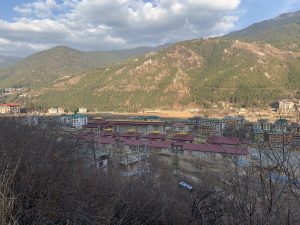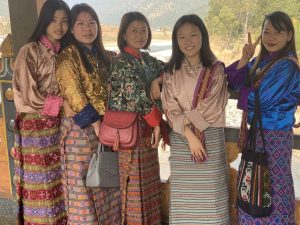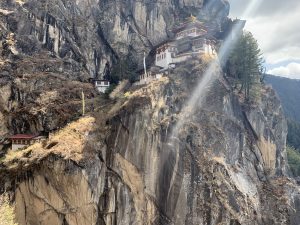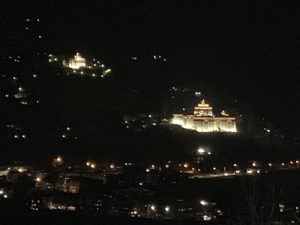Bhutan and Gross National Happiness in Action
Bhutan and Gross National Happiness
Learn about how the Bhutanese government measures progress through Gross National Happiness (GNH)
The real reason I wanted to go to Bhutan was to investigate the “Land of Happiness” after reading about the government policies that try to maximize this for their people. I thought this was intriguing but was also skeptical – would a government really prioritize the happiness of its people over all else?
Bhutan believes that the holistic development of the individual and society can be achieved only through the economic, social, emotional, spiritual and cultural needs of the people. Since the beginning of modernization in the 1980s, the government also recognizes that material and spiritual advancements must go hand-in-hand. This is a novel concept and something I pondered throughout the trip. How could we make material and spiritual advancement work together?
Like most visitors to Bhutan, we were on an organized trip and our guides did a pretty good job of explaining the four pillars of the government:
- Sustainable economic development
- Preservation and promotion of culture
- Conservation of the environment
- Good governance
As people migrated to urban areas seeking jobs, many of the villages had experienced a drastic population decline, so the government has tried to preserve the villages and their customs. If there is inactivity in a village for more than a year, then the government will seize it, so there is an incentive for people to return home and tend their land so that it’s not lost.
The government also supports active environmental conservation, with volunteers planting thousands of saplings every year to replenish the mountainsides. The supply of water is also a community responsibility (rather than just a government duty), with people actively involved in where their water comes from and its sustainable use.
Bhutan’s Gross National Happiness is calculated for each district, based on a whole variety of indicators that include the psychological wellbeing of people, community vitality, cultural diversity, and health. They also monitor how people use their time, living standards and education, as well as how people perceive the government’s performance. Factors such as volunteer work, spending time with elders, and helping the disabled are also accounted for in this calculation.
This is then calculated with a high score of 1 for each district and each district is graded
- Psychological well being: Negative emotions, Positive emotions, Spiritual activities like meditation and prayer producing positive karmic activities
- Time Use: Sleeping, personal care;Community participation; Education / continuous learning; Religion; Social / cultural; Leisure, sports, travel
- Community Vitality: Strengths and weaknesss in community, Nature of trust, relationships, safety, social support
- Cultural diversity and resilience: Nature and number or cultural facilities, Festivals, Artisan skills and sport
- Health: Overall health, Chronic diseases
- Education: Overall educational levels
- Ecological diversity
- Living Standard: basic economic status of the people, income, financial security,food and housing security, hardship
- Good governance: how people perceive various government functions, Freedom, Institutional trust
During our visit to Bhutan, there was a lot of infrastructure being built as the government strives to provide basic necessities for everyone. Unfortunately, there’s still a lot of unemployment in the country and even college graduates find it difficult to find jobs. There is a small entrepreneurial community in Bhutan but starting a business there isn’t easy. Even our tour guides, who were university educated and bilingual, only had worked when booking agents or tour operators called them, which wasn’t too frequent during the low season.
Bhutan generates the majority of its income from tourism and exporting agricultural goods and hydropower to India. We heard that a few entrepreneurs are controlling a lot of the revenue and jobs, which is only adding to income inequality. So there are definitely still challenges that need to be addressed by the government if people are going to be happy. After all, work and financial stability are two pillars of happiness (and probably two of the most important).
But we also noticed that most of the Bhutanese were equipped to control their own happiness through spirituality, with around 95% of the population Buddhist. Rituals such as visiting temples, cleansing the soul and meditation are actively practiced throughout the country, enabling people to take charge of their emotions and happiness, without help from the government. Most people appeared relaxed and serene, with a deep belief in the cause and effect principles of karma.
The Bhutanese are also well educated and everyone now studies English from an early age. So while most of their necessities are met, we did question whether the happiness was a result of good governance or outside (namely spiritual) influences. I’ll definitely be watching Bhutan’s progress on this in the future…and taking notes on how we can implement a similar happiness methodology in the USA.







